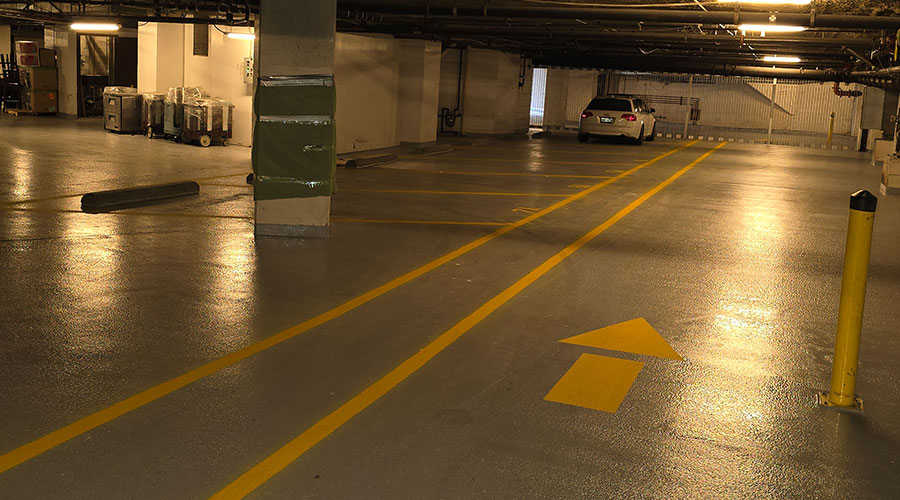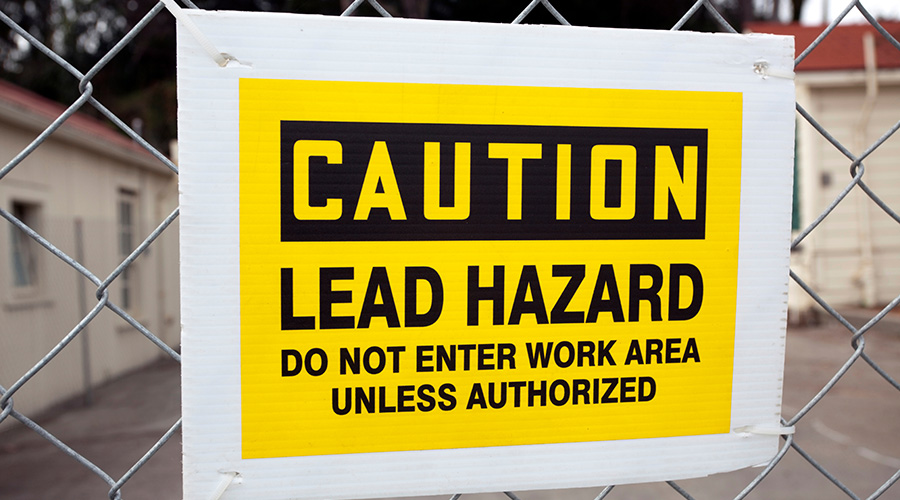Water Treatment: A Stream of Savings
Regular testing and targeted solutions are bringing a steady flow of benefits to facilities
Test kits and chemical dispensing systems have made the use of water treatment chemicals in chiller, boiler and cooling-tower systems much easier. But attention to details, such as how often systems are tested, is critical to system performance. The correct water treatment chemistry at the correct time is extraordinarily important because even minor problems can create major costs.
As little as 3/16-inch of scale can cause a boiler system to use 38 percent more fuel. The most miniscule amount of dissolved oxygen in the water also means a system could be headed for corrosion problems. And even a thin layer of bacterial slime in chiller tubes can significantly affect heat-transfer efficiency.
Maintenance and engineering managers’ efforts to increase energy efficiency through new technology and operational strategies puts added emphasis on understanding the importance of water treatment. For managers looking to squeeze energy savings from heating and cooling systems and reduce system maintenance, the rather low-tech, unglamorous job of water treatment should be a top priority.
A number of problems are directly related to the condition of the water in closed-loop cooling, hot water, steam and cooling-tower systems. Often, departments must attend to more than one problem. But the four most common problems are corrosion, scaling, particulate matter and microbiological matter.
Confronting Corrosion
Corrosion causes pitting inside boilers and chilled water systems that can lead to leaks in pipes and tubes. Pitted areas also create places for biological growth to occur. Two common sources of corrosion are acidic conditions and dissolved gases.
Acidic conditions occur when water pH drops below 7.0. The ideal pH for preventing corrosion is 9.5-10 for systems that require makeup water and 8-8.5 for systems that don’t.
Water at those levels is minimally aggressive to pipes, says Geoffrey Halley, director of technical affairs with American Boiler Manufacturers Association
The pH of the water is very important to system health. It affects corrosion and can contribute to scaling. While most water supplies are slightly alkaline, every water supply is different, and managers should schedule tests to determine its pH.
The less makeup water, the better, says Ben Boffardi, a water treatment consultant in Bethel Park, Pa. “Makeup water should be less than 5 percent a year,” Boffardi says.
Dissolved gases also can cause corrosion. Carbon dioxide and oxygen also can be very corrosive and usually are present in the water. Carbon dioxide can form carbonic acid, and oxygen at very low levels — higher than 0.005 parts per billion (ppb) — also can corrode pipes and tubes. Carbon dioxide can be treated chemically using amines, which neutralize it.
Oxygenated water is treated mechanically and chemically. Deaerators heat water to near boiling — around 210 degrees at sea level — to “cook off” oxygen. But deaerators can only reduce oxygen content down to 0.007 ppb of oxygen. The other method is to treat water with a so-called oxygen scavenger, such as sodium sulfite.
Treating Hard Water
Scale is a deposit of minerals and salts that are nearly always present in water. The amount and types of dissolved materials in the water depends on a facility’s location. Most often, scale is made of calcium carbonate and calcium phosphate. A layer of scale will reduce efficiency of mechanical systems, and in boilers, it can contribute to tube failure.
The alkalinity of water can affect scale formation. Alkaline pH levels that are too high can cause material to precipitate out.
Historically, Boffardi says, facilities have added sulfuric acid to prevent calcium carbonate scale. Today, the use of polyphosphate and phosphonates is more common. Other prevention methods include reverse osmosis and deionization. On the condensate side, managers can use dealkinizers to adjust pH.
Neutralizing or filming amines also can be added, Halley says. Amines prevent the formation of scale on metallic surfaces. Depending on the age of the system, it is important to start introducing amines gradually, because adding them too quickly could dislodge built-up materials, he says.
Particulate and Microbiological Matter
Foulants can be a problem in older systems and in most cooling towers, whether they are new or old. Foulants — bits and pieces of algae, fungi and bacteria and dust, corrosion particles and similar materials — can cut a surface’s heat-transfer efficiency and even clog systems. Several types of filters can remove particles as small as 5 microns.
A typical chemical remedy is to use dispersants, which will keep foulants from settling in the system. Disperants eventually will allow the materials to be trapped in the lower part of the systems where a blowdown will flush them into the sewers.
“Chemistry can only do so much,” Boffardi says. “Eventually, you have to get rid of the stuff. And regular blowdowns should be part of the maintenance of the system.”
Algae, a plant found commonly on cooling-tower surfaces because it needs light, and bacteria, which shows up as slime on internal heat-transfer surfaces, can cause biological fouling and can affect the efficiency of chiller, boiler and cooling tower systems. These biological problems can be controlled with oxidizing biocides, such as chlorine and bromine, Boffardi says, as well as with a variety of nonoxidizing biocides used primarily in closed-loop systems.
Identifying Problems
Periodic inspection and cleaning of boiler and chilled-water systems are critical. But even before an inspection, managers should look for operational problems. Temperatures and pressure drops through the heat exchanger on chilled-water systems that are higher than designed might indicate a problem with buildup.
Regular boiler inspections — once a year — should include checks for scale and corrosion. Inspectors also should look for foam or unstable water lines in a boiler’s sight glass. This symptom indicates there might be a problem with alkalinity. With boiler systems, high stack temperature might indicate a scaling problem. Water hammer and overloaded steam traps might indicate carryover from the boiler caused by foaming in the water, Halley says.
Stack temperatures should be checked daily, he says. And problems with water hammer may be scaling, assuming valves were sized appropriately.
The Challenge of Efficiency
There’s no doubt that the engineering of chilled-water, cooling-tower and boiler systems to improve energy efficiency has been a boon to managers’ efforts to improve organizations’ bottom lines. Even operational efforts to take equipment in and out of service when electrical demand and rates call for such moves has contributed significantly to energy cost savings.
But in the case of heating and cooling systems, efforts to engineer efficiency have created problems, including the fouling of heat-exchange surfaces and other critical areas. And design and operational changes have exacerbated some problems. As a result, proper water treatment for these systems has become even more critical.
Redesigned condenser tubes included in many higher-efficiency chillers and in recently retrofitted chillers feature interior spiral grooves to increase water-flow efficiency. Unfortunately, these grooves also allow the buildup of biological and other materials.
New designs for cooling towers have turned to film-type fill that helps create more surface area for the water and enhances a tower’s heat-exchange capabilities. But the new design also creates more surface area for microbiological growth, and enhanced evaporation means more build up of material.
Even new boilers with improved heat exchangers create conditions where scale might grow more easily.
Operational issues, such using a free cooling strategy or cycling equipment on and off, can create other problems. In terms of water treatment, free cooling is one of the trickiest issues for managers, Boffardi says.
Facilities using free cooling should use only flat-plate heat exchangers to minimize problems with deposits. Free cooling also might introduce more bacteria to the closed-loop system. Filters will take out particulates but not bacteria, he says.
“Even with a flat-plate exchanger, there should be a filter, preferably a sand filter, filtering 5 percent of circulation down to 5 microns,” Boffardi says.
because the systems are closed. For systems that require makeup water, such as steam systems, managers might have to overcompensate and make systems slightly more alkaline.
|
Talking Savings
The first rule of water treatment is regular testing. Keeping up with changes in the chemistry is critical because slight variances can have expensive repercussions, says Warren Scott, supervisor of mechanical systems at the Massachusetts Institute of Technology (MIT) in Cambridge, Mass.
But in facilities that don’t have regular communication with the maintenance staff responsible for water treatment, it is difficult to keep water chemistry balanced.
“The problem we’re usually facing is we’re always playing catchup with the systems,” Scott says. “We can never get the chemistry right and keep it right because there is always a problem — a leak in the system no one told us about or system shutdown for new construction.”
Carrying out proper water treatment can take a great deal of maintenance manpower — something many facilities lack — but Scott has learned that doing the best they can pays off. At MIT, as a result of a more hands-on approach to water treatment, related chemical costs have dropped from nearly $60,000 per year a decade or more a go to about $25,000-30,000 today.
|
Related Topics:











